| Back to
Hypocritical Exotic and Wild Animal Sanctuaries |
“Do unto others as you would have others do unto
you."
REXANO Editorial By Sean Poole and Zuzana Kukol, 2010
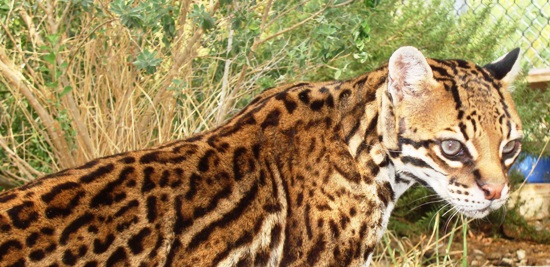
Imagine this scenario: Your ailing, elderly mother lives on a fixed
income. Her doctor has prescribed new, more expensive medicine.
She reads an article about a non-profit group, let’s call it M4K, Money
4 Kids. M4K solicits donations and supposedly provides funding for the
care of unwed mothers, as well as unwanted or abandoned children.
Or imagine another non-profit group; let’s call it C4F, Cars 4 Families.
C4F raises funds for poor families, so they can buy a car, get a job and
get off welfare.
Your mom, being a giving soul, decides to postpone buying her much
needed medication, and donates to these ‘charitable organizations’
instead.
Now imagine that a few weeks later your mom is in the hospital on a
ventilator, because she couldn’t afford to purchase her new medicine.
You are sitting by her bedside when you see the news headlines.
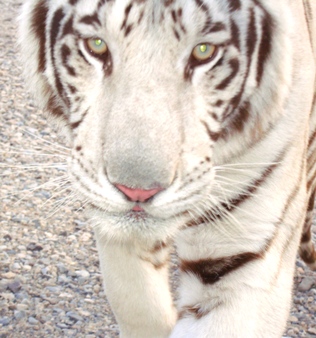
M4K is a fraud! The group’s leaders were really soliciting money for
themselves. They were buying large homes and taking expensive trips.
They had illegally adopted or kidnapped or bought the children on the
black market. The children were kept in horrible conditions without
proper nutrition or care. The leaders even forced the children to have
more children when they became of age. The people behind M4K shamelessly
scammed the naive public to pay for their illegal and reprehensible
activity.
C4F is a scam as well. The group was soliciting money for cars, but none
went to the needy families. The money was used to buy a brand new
Ferrari for the group’s president.
How would you feel if something like this happened to your loved ones?
Our exotic animal industry is full of greedy scammers like the fictional
ones above. Majority, but not all, of these “non-profit” exotic animal
sanctuaries and so-called ‘rescue’ facilities buy or breed their own
exotic pets, or selectively ‘rescue’ what is missing in their
collection. They lie to animal loving donors that the money taken is
funding conservation projects, or programs to end exotic animal abuse.
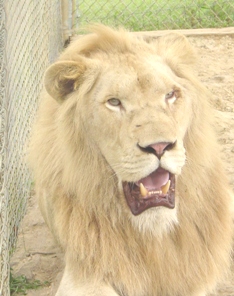
Sanctuaries are often founded and run by ambitious charismatic
individuals. They use clever self-promotion to present themselves as
experts in fields in which they actually have little or no knowledge.
These ruthless charlatans dupe the public into supporting what are often
no more than substandard dog pounds for big cats. Funds that should be
going to honest sanctuaries and rescues, and respectable conservation and
research programs for big cats in the wild, are instead spent on adding
to the exotic pet collections of these psychotic animal collectors.
The big cats and other wild animals in need of a real rescue are the
wild ones in Asia, Africa and South America.
A few thousand dollars in the right hands abroad can help save a
species. Funding for on the ground, grassroots conservation and research
programs of big cat rescuing is desperately needed NOW. Money spent on
substandard care for captive cats in the U.S. is being wasted on a lost
cause with no merit and no real hope of success. Often the only ones
benefitting are the greedy ‘scamtuary’ owners, paying themselves huge
salaries or using donors’ money to pay for their cars, phone, computers,
etc....
Wild leopards, lions, cheetahs and others are in constant need of
rescue. Big cats in the wild need to be captured and relocated from
farms they wander onto. All exotic wild animals require protection from
poachers. Every month one captive big cat in a “scamtuary” in the United
States consumes the amount of food needed to save the life of one big
cat in the wild.

Big cats, great apes and other exotic or wild animals in the U. S. that
are rescued from substandard facilities usually go from one miserable
dog pound type situation to another. Many of them will outlive the
facilities they are in. The multi millions of donated dollars spent on
keeping these supposedly abused animals alive in less than ideal
conditions would be more effectively spent on conservation and research
projects for animals in the wild.
The tremendous cost of properly housing and feeding big cats, great apes
and other exotics drives many sanctuaries into the position of having to
rely on donations and deception in order to feed their pet animals. The
animals are often kept in poorly constructed enclosures lacking proper
shifts or lockdowns that allow for regular cleaning.
Ideally, a true sanctuary provides a Zen-like atmosphere of peace and
tranquility. It should be a clean, clear, sweet and mellow place of
peace, harmony and have NO VISITORS. But this is rarely the case. Often
quite the opposite really happens.
Animals are kept in small cages while literally thousands of visitors
are paraded past.
The sanctuary owners acknowledge the poor conditions with the
justification - “At least the animal is alive!” .
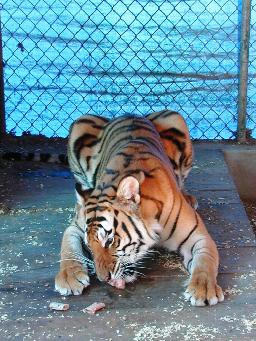
They often claim to have
rescued lions and tigers or monkeys from abusive situations so horrible
that – allegedly- the animals developed Post-traumatic Stress Disorder.
They claim ACCREDITATION and this is a well known JOKE as no real
standards are adhered to, and the accreditation entity is really just a
private friends club of these ‘sanctuary’ owners accrediting themselves.
Now the animals are in an equally substandard facility being gawked at
by crowds of noisy spectators, who are total strangers to them. It is
impossible for the animals to enjoy peace and tranquility in these
conditions.
Even sanctuaries that claim they have no visitors often do by calling
them ‘volunteers’, having a fundraiser on the premises, or renting an
overpriced cabin on the property to the tourists.
The regulatory agencies tend to be much more lenient with facilities
designated as “Sanctuaries” than they are with “Zoos”. This results in
many sanctuaries being allowed to keep animals in substandard conditions
for which zoos would be fined. Officials often are afraid to shut down
these overcrowded, donation dependent facilities, because there is
usually no back up financial and relocation plan as to what to do with
100 plus misplaced big exotic animals on a short notice.
Yet these ‘Scamtuaries’ continue to be open to the public. The owners
continue to profit from exhibiting their animals. Some truly love the
animals, but their heart is bigger than their wallet. Some truly just
want to scam naive public out of thousands or millions of dollars for
their personal gain.

“Scamtuaries” are nothing more than pseudo-zoos with small unclean cages
often filled with mud and feces and run by untrained staff. They deceive
the public by claiming they are barely getting by and “doing the best
they can”, and at times threatening to euthanize the animals unless the
public donates to them NOW.
In reality they are making hundreds of thousands to millions of dollars
a year. These unscrupulous imposters spend the money on fund raising
activities like parties. They also spend it to acquire more animals,
while real wild animals go extinct in their natural habitats. Even the
very few whose facilities look much better are really still stealing
from the wild animals by using naďve public’s donations to buy more
expensive exotic pets, or selectively ‘rescue’ cute cubs ‘accidentally’
born at another sanctuary. The $$$ is needed for wild apes and big cats,
not for dog pound lives here.
The scamtuaries are getting more brazen. No longer do they only want
standard colored orange tigers or lion cubs, which are relatively cheap.
Now they are pushing the envelope of their donors’ generosity to buy
more expensive and extremely rare animals, such as cheetahs, ocelots,
clouded or snow leopards, jaguars and white lions.
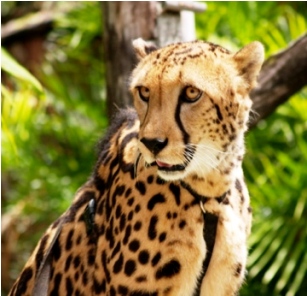
One of these scamtuaries, we’ll call it M4C- Money 4 Cats, recently
bought several cheetahs from a reputable dealer for over forty thousand
dollars. The cats were healthy and living in good conditions. They were
not in need of rescue, and they were not rescued. These pets were
purchased with donors’ money. Not a single cent of the funds they
generate for the facility will be used to help wild cheetah that are
truly in need of rescue. But visitors to M4C will likely be told these
cats were rescued, or some similar pseudo “conservation” story. The
facility will ask for and accept money to help care for these pet
cheetahs. They will knowingly deceive generous people who believe that
their money is doing something more than paying for the private
menagerie of an eccentric, already rich, multiple accident prone
dishonest pet collector.
Scamtuaries generate millions of dollars annually with their unethical
activities. They divert large amounts of much needed money away from
honest rescues and grassroots wild big cat conservation projects, where
the funds would make a significant impact on a serious conservation
issue. Their potentially fraudulent behavior disparages and damages the
credibility of everyone else in the exotic animal business who is
engaging in honest business and legal private ownership. The public is
being lied to. The animals are falsely represented as having been
rescued. The donors are being cheated out of their money. They are
conned into believing they are helping to fund actual conservation
projects. Big cats and great apes in the wild are being cheated out of
the funding needed to support their conservation and research programs.
They are going extinct so that criminals can keep personal collections
of endangered exotic species in substandard conditions in order to
gratify their own egos.
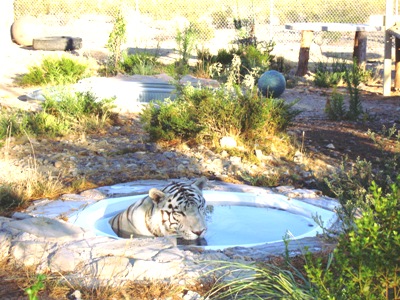
The truly abused humans are not only the scammed donors, but also the
honest and ethical private pet owners, honest sanctuaries who don’t
fabricate the stories, and commercial facilities who earn their own
money, and keep their animals in excellent conditions.
We are very vocal in supporting responsible exotic animal ownership if
it is done honestly and ethically. Don’t lie about the origins of your
animals. You must legally buy what you can afford and responsibly keep
long term with your own money. Don’t buy more than you can afford to
take care of, and don’t rely on others people’s money.
Scamming well-meaning donors, many of them elderly and living on fixed
incomes, is neither ethical nor responsible. If you want a rare
expensive pet, you must understand and accept all the moral, financial
and legal responsibility of animal husbandry. And you must be able to
afford it. You must buy it with your own money.
Exotic animal sanctuaries and the private ownership of exotic animals
have a rather tarnished image in today’s world. It appears that the
worst offenders are the people who pretend to be animal Gods in the eyes
of the public. ‘Sanctuary’ and ‘rescue’ are two of the most abused words
in the exotic community. In time, they believe their own lies, and claim
a higher moral ground for keeping their ‘pseudo rescue’ exotic pets.

In the final analysis perhaps the most morally justifiable reason to
keep exotic endangered species like great apes and big cats in captive
commercial or non-profit educational collections is if the animals are
being used for a higher purpose. Educating the public of the dangers
facing these animals in the wild, where they really need to be rescued,
and generating the funding necessary to support effective conservation
programs in the wild, is essential if we are truly concerned with saving
the magnificent animals that share the world with us.
If all the sanctuaries and rescues got honest, the artificial problem of
abused exotics would pretty much disappear.
What comes around goes around. Do you believe in
Karma?
Copyright © REXANO 2010
www.REXANO.org
|
The Big Problem
REXANO Editorial By Zuzana Kukol, 2010

The big problem with exotic animal sanctuaries or scamtuaries is not only
the type of expensive exotic animals being bought, it is also the huge
sums of money some sanctuaries are asking in order to accept new ‘non
exciting’ animals.
Recently a certain sanctuary wanted the public to give them 250,000
dollars, YES, quarter of a million, in order for them to take in 4
cougars in the future. Few month later the same ‘sanctuary’ asked the
same amount for one juvenile black bear.
That
is obscene and greedy; economy is bad and humans are losing their
houses. Many captive or wild animals can be helped with that kind of
money, and the animals truly don’t care how aesthetically pleasing to
humans their sleeping den is.
Gorgeous human homes sell for that amount of money! In some cases, the
sanctuary truly builds nicer cages. Regrettably, more often than not,
the money just goes to personally enrich the sanctuary owners.
A few years ago 3 illegal tigers were discovered in Nebraska. Another
‘sanctuary’ agreed to take them IF they got 150,000 dollars upfront for
caging. This place started media and Internet fundraising, ‘supposedly’
for these tigers. I contacted the Nebraska state wildlife department.
The wildlife agents were confident the issue was solved, and that the
tigers were going to this particular “sanctuary”. I assured them I knew
this place, and advised them to keep their options open and have a
backup plan, and not to put too much trust into this particular place.
I was right, the tigers ended up going to different sanctuaries, and the
greedy place kept the money they raised anyway. In addition, this
facility got themselves few extremely rare NON RESCUED baby exotic cats
instead.
What kind of message did this unethical sanctuary send to the Nebraska
wildlife agents? That the exotic animal community, sanctuaries in
particular, can’t be trusted?
In another case, a ‘sanctuary’ bought a very expensive exotic animal for
$75,000, to be remitted in multiple payments. Toward the end, the checks
started to bounce, so the breeder took the sanctuary to court and won.
The scamtuary eventually paid the breeder the money owed to get their
personal pet back, but both sides had to pay attorney’s fees. The
scammed breeder was never refunded the court fees, and I wonder how
donors like their money being spent on expensive pets and attorneys’
fees, instead on truly needy animals. The breeders too need to get more
responsible and STOP selling their animals to scamtuaries.
n recent years few well known hypocritical sanctuaries imported big cats
from South America and Mexico. If USA truly has such a big problem with
homeless exotic cats, why not rescue the ones that are already here, why
the need to import the ‘rescues’ huge costs?
Some sanctuaries also are very fast to ‘rescue’ cubs or the small cat
species (smaller than cougars), which are in short supply. They are more
valuable and can easily be re-homed to a self supporting non-sanctuary
environment. The explanation (excuse) I was given was that wildlife
agents would not place a confiscated illegal pet in a non-commercial
‘pet’ home, or even a commercial exotic non-rescue place.
That is a lie. I am a non-commercial pet owner, and last year I worked
with CA and NV state wildlife agents to bring an extremely spoiled
illegal pet bobcat to Nevada from California.
The previous owners are still very involved in her life, and if they ever
get legal, they can get their exotic pet back, as I truly believe the
exotic cats do best with whoever raised them. I was worried that if this
bobcat went to a hypocritical sanctuary, the owners would never get a
chance to get it back, and they probably would be asked not to visit it
as it would be ‘supposedly’ too confusing for the animal. Also the
sanctuary would be likely fabricating stories about how the owners
supposedly didn’t take care of the animal properly and abused it, and
that these animals make bad pets.
Too many sanctuaries are very quick to do extra media circus getting
animals from highly publicized cases, and are asking huge amounts of
money for caging. Why not just help the current owner to improve the
husbandry, and get legal? Why the need to be greedy and grabby media
whores?
In some cases, the sanctuaries keep the animals alive too long instead of
ending their suffering. In one case, 25-year-old tiger was put thru
invasive cancer surgeries, instead of being euthanized long time ago. In
other case, a lame exotic sheep or goat had a 4-wheeled contraption
built around its body so it could ‘walk’. In all cases, these extreme
cases bring lots of media and donations, as well as suffering to the
animals that should have been humanely euthanized long time ago. Instead
these poor animals are being abused and exploited as a fundraising media
tool.
It is one thing if these animals are pets and you are spending
your own money. It is completely different when donor’s money earmarked
for possible true honest rescue, or conservation, are used on frivolous
surgeries and contraptions that often just add to the animals’’
suffering.
Sometimes euthanasia is better than keeping suffering animals
alive in pain or in unnatural or cramped conditions.
|

